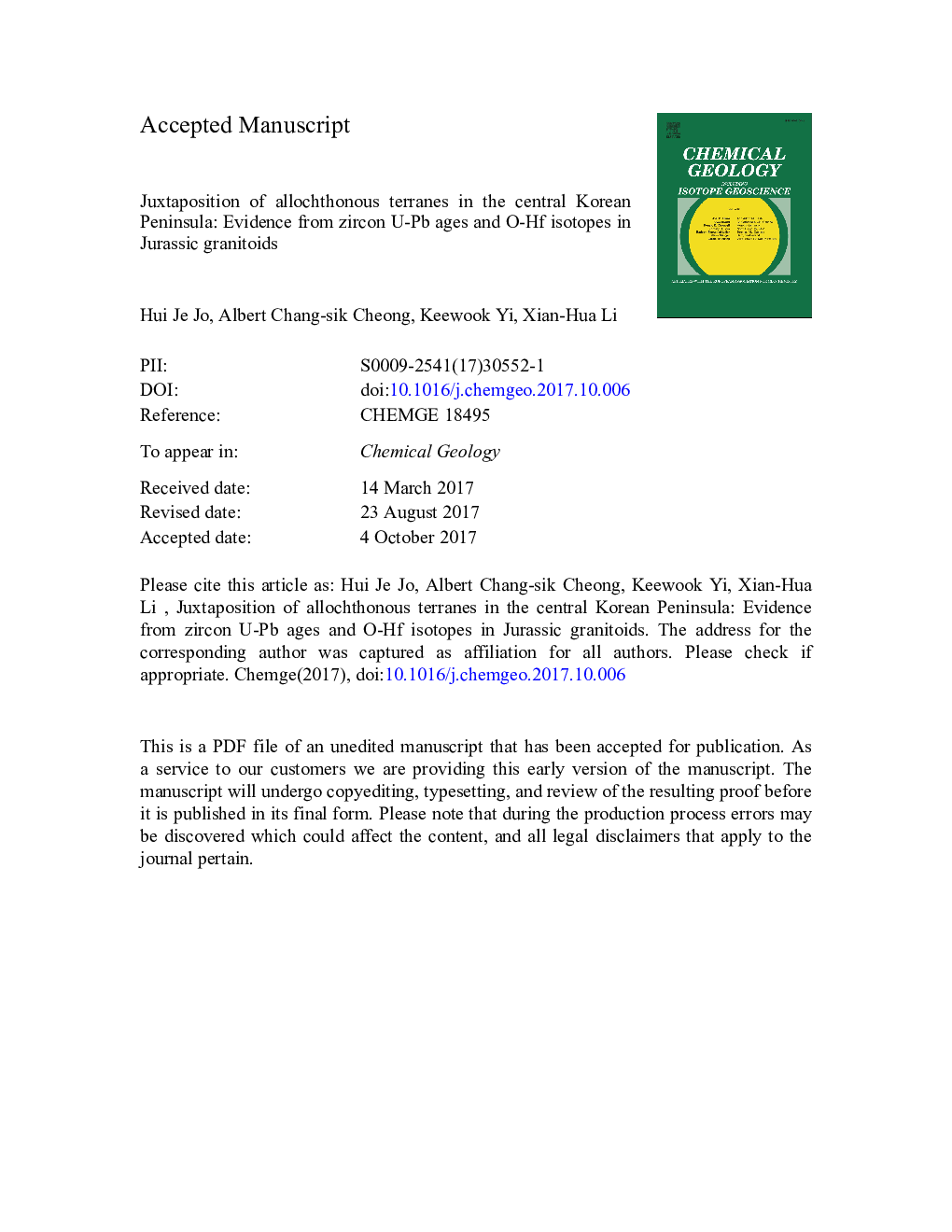| Article ID | Journal | Published Year | Pages | File Type |
|---|---|---|---|---|
| 8910255 | Chemical Geology | 2018 | 44 Pages |
Abstract
The eventual docking of an exotic continental mass over the course of a Wilson cycle is marked by intracontinental sites of prograde metamorphism, contractional deformation, and syn- or post-collisional magmatism. This study shows that inherited premagmatic zircon in subsequently emplaced granitoid rocks provides another line of evidence for the collisional orogeny. Following the continental collision between the North and South China Cratons, Jurassic granitoids intruded widely throughout the central Korean Peninsula in association with the subduction of the Paleo-Pacific plate. The latest Early to Middle Jurassic (177-167 Ma) granitoids occur throughout the cratonic Gyeonggi Massif, whereas Early Jurassic (194-184 Ma) granitoids occur locally along the Okcheon Metamorphic Belt to the southeast of the massif. These two spatiotemporal groups differ profoundly in their age patterns and O-Hf isotopic signatures of inherited zircon. The younger group yields a typically North China-like Archean-Paleoproterozoic (mostly 2.5-1.8 Ga) zircon inheritance. In contrast, inherited zircons from the older group exhibit exclusively Neoproterozoic (ca. 0.9-0.7 Ga) and Paleozoic (ca. 0.4 Ga) cluster along with Archean-Paleoproterozoic populations. The exotic feature of the protolith of the older group is further indicated by significantly lower δ18O (â 0.9 to + 4.9â°) and positive εHf (+ 3 to + 15) values of the Cryogenian zircon cores. The results of zircon analysis demonstrate that South and North China-like terranes were juxtaposed infracrustally along the southeastern margin of the Gyeonggi Massif during the pre-Jurassic collisional orogeny, and then selectively provided major source material to the older and younger Jurassic granitoids, respectively.
Related Topics
Physical Sciences and Engineering
Earth and Planetary Sciences
Geochemistry and Petrology
Authors
Hui Je Jo, Albert Chang-sik Cheong, Keewook Yi, Xian-Hua Li,
